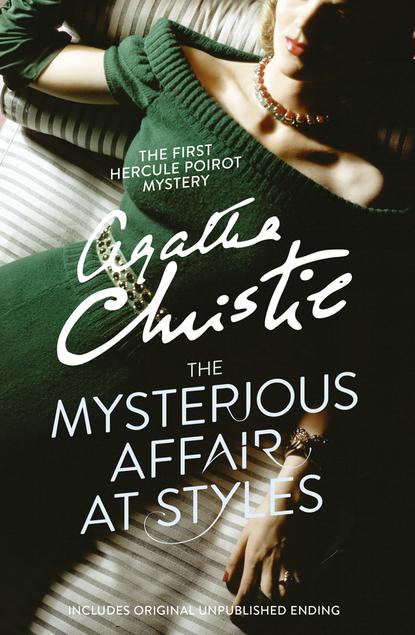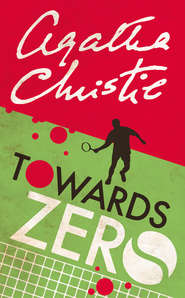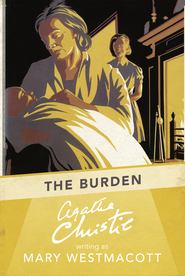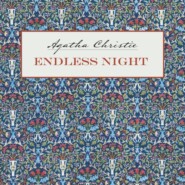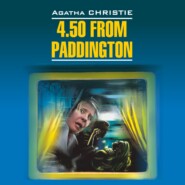По всем вопросам обращайтесь на: info@litportal.ru
(©) 2003-2025.
✖
The Mysterious Affair at Styles
Автор
Год написания книги
2019
Настройки чтения
Размер шрифта
Высота строк
Поля
by John Curran (#ulink_1f766055-5c8f-51e6-9889-19c71bcbb73c)
In An Autobiography, written towards the end of her life, Agatha Christie gives an account of the genesis of The Mysterious Affair at Styles, her first published novel written some fifty years earlier. It had its origins in a challenge from her sister Madge: ‘I bet you can’t write a good detective story.’ At the time Agatha was working in the dispensary of the local hospital and had a professional knowledge of poisons. This, coupled with the fact that Belgian refugees fleeing the First World War were arriving in her home town of Torquay on the south coast of England, provided Agatha with both her murder method and her detective’s background.
This was not her first literary effort, nor was she the first member of her family with literary aspirations. Both her mother Clara and sister Madge wrote, and Agatha had already written a ‘long dreary novel’ (her own words in a 1955 radio broadcast) and some short stories and sketches. Though the stimulus to write a detective story probably was the bet with her sister, there was obviously an innate talent within Agatha to plot and write such a successful book.
Although she began writing The Mysterious Affair at Styles in 1916 (the novel is set in 1917), and eventually completed it at the encouragement of her mother during a two-week seclusion in the Moorland Hotel, it was not published for another four years. Its publication was to demand consistent determination on its author’s part as more than one publisher declined the manuscript. Finally in 1919 John Lane, co-founder of The Bodley Head Ltd, asked to meet her in London with a view to publication. But even then, the struggle was far from over.
The contract that John Lane offered her for the mistakenly named The Mysterious Affair ‘of’ Styles, dated 1 January 1920, took advantage of Agatha Christie’s publishing naivety. She explains in her autobiography that she was ‘in no frame of mind to study agreements or even think about them’. Her delight at the prospect of publication, combined with the conviction that she was not going to pursue a writing career, persuaded her to sign a six-book contract. She was to get a royalty of 10 per cent only after 2,000 copies were sold in the UK, and she was obliged to produce five more titles in a clause that was to lead to much correspondence over the following years.
The readers’ reports on the Styles manuscript were promising, despite some misgivings. One gets right to the commercial considerations: ‘Despite its manifest shortcomings, Lane could very likely sell the novel … There is a certain freshness about it.’ A second report is more enthusiastic: ‘It is altogether rather well told and well written.’ And another speculates on her potential future, ‘if she goes on writing detective stories and she evidently has quite a talent for them.’
The readers were much taken with the character of Hercule Poirot—‘the exuberant personality of M. Poirot who is a very welcome variation on the “detective” of romance’; ‘a jolly little man in the person of has-been famous Belgian detective’. Although Poirot might have taken issue with the use of the description ‘has-been’, it was clear that his presence was a factor in the manuscript’s acceptance. In a report dated 7 October 1919, one very perceptive reader remarked, ‘but the account of the trial of John Cavendish makes me suspect the hand of a woman’. Because her name on the manuscript appears as A.M. Christie, another reader also refers to ‘Mr Christie’.
Despite these favourable readers’ reports, there were further delays, and after a serialization in The Weekly Times—the first time a ‘first’ novel had been chosen—beginning in February 1920, Christie wrote to Mr Willett at The Bodley Head in October wondering if her book was ‘ever coming out?’ pointing out that she had almost finished her second one. Soon thereafter she received the projected cover design, which she approved, and almost five years after she began it, Agatha Christie’s first book went on sale in the UK on 21 January 1921.
The reviews on publication were even more enthusiastic than the pre-publication reports. The Times called it ‘a brilliant story’ and the Sunday Times found it ‘very well contrived’. The Daily News considered it ‘a skilful tale and a talented first book’, while the Evening News thought it ‘a wonderful triumph’ and described Christie as ‘a distinguished addition to the list of writers in this genre’. ‘Well written, well proportioned and full of surprises’ was the verdict of The British Weekly.
As we have seen, one of the early readers’ reports mentioned the John Cavendish trial. In the original manuscript, Poirot gives his explanation of the crime from the witness box during the trial. In An Autobiography Christie describes John Lane’s verdict on her manuscript, including his opinion that this courtroom scene was not convincing and his request that she amend it. She agreed to a rewrite, and although the explanation of the crime itself remains the same, instead of giving it in the course of the judicial process, Poirot unveils the murderer in the drawing room in the kind of scene that was to be replicated in many later books.
Although the typescript of the original courtroom chapter is long gone, the significance of Agatha Christie’s handwritten notebooks to researchers had long been disregarded, almost certainly on account of the general illegibility of her handwriting. The 73 notebooks cover her entire literary life, beginning with her French homework from her time in Paris as a young woman to the last years of her life when she was planning a novel to follow Postern of Fate in 1973. They include notes for most of her novels, many of her short stories, and some of her stage plays. Also scattered throughout the 7,000 pages are ideas for stories she never wrote, some poetry, travel diaries, and rough notes for some of her Mary Westmacott novels. Of a more personal nature were jottings of ideas for Christmas presents, her reading lists, possible plants for the garden, doodles for crosswords, and household lists. The physical notebooks are unimpressive—small and large, with and without covers, cheap and expensive—and filled with, in many cases, indecipherable handwriting in pen, pencil and biro. But as an insight into the creative process of the bestselling writer of the last century, they are a priceless literary heritage.
Incredibly—for it was written, in all probability, in 1916—the deleted scene, as well as two brief and somewhat enigmatic notes about the novel, have survived in the pages of Notebook 37. The chapter and notes for The Mysterious Affair at Styles were written in pencil, with much crossing out and many insertions. This is difficult enough to read, but an added complication lies in the fact that Christie often replaced the deleted words with alternatives, squeezed in, sometimes at an angle, above the original. And although the explanation of the crime is, in essence, the same as the published version, the published text was of limited help in deciphering them. The wording is often different and some names have changed. Having spent the best part of two years transcribing the notebooks, I can say that of all the entries this exercise was the most challenging, but the fact that it is Agatha Christie’s and Hercule Poirot’s first case made the extra effort worthwhile.
This new edition of The Mysterious Affair at Styles is the first to restore Agatha Christie’s original unpublished courtroom ending to her book, so that you, the reader, can judge whether or not John Lane was right in insisting on a rewrite. The deleted version of Chapter 12, ‘The Last Link’, is printed at the back of the book, and can be read as an alternative to the published Chapter 12. Because the original chapter has been reconstructed from the unedited draft in Notebook 37, I have added conventional punctuation, made some minor edits for the sake of consistency, and omitted a few illegible words to ensure it is fully readable. (A more detailed presentation of the chapter, complete with annotations and footnotes, can be found in my book Agatha Christie’s Murder in the Making.)
Although Poirot’s dramatic evidence and explanation is essentially the same in both the courtroom and the drawing room versions of the chapter, the unlikelihood of a detective being allowed to give court evidence in the manner of a witness is self-evident. Had John Lane but known it, in demanding the alteration to the denouement of the novel he unwittingly paved the way for a half century of drawing room elucidations stage-managed by Poirot. In The Murder of Roger Ackroyd, Peril at End House, Three Act Tragedy, Death in the Clouds, The ABC Murders, Dumb Witness, Hercule Poirot’s Christmas, Five Little Pigs and After the Funeral, among others, Poirot holds forth to the assembled suspects in scenes reminiscent of this first explanation in Mary Cavendish’s Kensington drawing room, where the family have moved for the duration of the trial. Not all of his expositions are in such elegant surroundings, however; an archaeological dig is the background in Murder in Mesopotamia, a snowbound train in Murder on the Orient Express, a dubious guest-house in Mrs McGinty’s Dead, a student hostel in Hickory Dickory Dock. Miss Marple, on the other hand, often confronts the killer—Sleeping Murder, Nemesis, The Mirror Crack’d, 4.50 from Paddington, A Murder is Announced, A Caribbean Mystery—reserving the detailed explanation for later. Doubtless, Poirot’s vanity enjoys the adulation that follows his explanation!
The usual clichéd view of Christie is that all of her novels are set in country houses like Styles Court, and/or country villages. Statistically, this is inaccurate. Less than 30 (i.e. little over a third) of her titles are set in such surroundings, and the figure drops dramatically if you discount those set completely in a country house, as distinct from a village. But as Christie herself said, you have to set a book where people live.
In other ways also The Mysterious Affair at Styles presaged what was to become typical Christie territory—an extended family, a poisoning drama, a twisting plot, and a dramatic and unexpected final revelation. It is not a very extended family in Styles, however; there are only seven suspects, which makes the disclosure of a surprise murderer more difficult and Christie’s achievement in her first novel even more impressive.
In his 1953 survey of detective fiction, Blood in their Ink, Sutherland Scott describes The Mysterious Affair at Styles as ‘one of the finest “firsts” ever written.’ Countless Christie readers over almost a century would enthusiastically agree.
DR JOHN CURRAN
March 2013
CHAPTER 1 (#ulink_4e6ae9fb-2d84-5adc-8d8a-13d98fe7b725)
I Go to Styles (#ulink_4e6ae9fb-2d84-5adc-8d8a-13d98fe7b725)
The intense interest aroused in the public by what was known at the time as ‘The Styles Case’ has now somewhat subsided. Nevertheless, in view of the world-wide notoriety which attended it, I have been asked, both by my friend Poirot and the family themselves, to write an account of the whole story. This, we trust, will effectually silence the sensational rumours which still persist.
I will therefore briefly set down the circumstances which led to my being connected with the affair.
I had been invalided home from the Front; and, after spending some months in a rather depressing Convalescent Home, was given a month’s sick leave. Having no near relations or friends, I was trying to make up my mind what to do, when I ran across John Cavendish. I had seen very little of him for some years. Indeed, I had never known him particularly well. He was a good fifteen years my senior, for one thing, though he hardly looked his forty-five years. As a boy, though, I had often stayed at Styles, his mother’s place in Essex.
We had a good yarn about old times, and it ended in his inviting me down to Styles to spend my leave there.
‘The mater will be delighted to see you again—after all those years,’ he added.
‘Your mother keeps well?’ I asked.
‘Oh, yes. I suppose you know that she has married again?’
I am afraid I showed my surprise rather plainly. Mrs Cavendish, who had married John’s father when he was a widower with two sons, had been a handsome woman of middle-age as I remembered her. She certainly could not be a day less than seventy now. I recalled her as an energetic, autocratic personality, somewhat inclined to charitable and social notoriety, with a fondness for opening bazaars and playing the Lady Bountiful. She was a most generous woman, and possessed a considerable fortune of her own.
Their country-place, Styles Court, had been purchased by Mr Cavendish early in their married life. He had been completely under his wife’s ascendancy, so much so that, on dying, he left the place to her for her lifetime, as well as the larger part of his income; an arrangement that was distinctly unfair to his two sons. Their stepmother, however, had always been most generous to them; indeed, they were so young at the time of their father’s remarriage that they always thought of her as their own mother.
Lawrence, the younger, had been a delicate youth. He had qualified as a doctor but early relinquished the profession of medicine, and lived at home while pursuing literary ambitions; though his verses never had any marked success.
John practised for some time as a barrister, but had finally settled down to the more congenial life of a country squire. He had married two years ago, and had taken his wife to live at Styles, though I entertained a shrewd suspicion that he would have preferred his mother to increase his allowance, which would have enabled him to have a home of his own. Mrs Cavendish, however, was a lady who liked to make her own plans, and expected other people to fall in with them, and in this case she certainly had the whip hand, namely: the purse strings.
John noticed my surprise at the news of his mother’s remarriage and smiled rather ruefully.
‘Rotten little bounder too!’ he said savagely. ‘I can tell you, Hastings, it’s making life jolly difficult for us. As for Evie—you remember Evie?’
‘No.’
‘Oh, I suppose she was after your time. She’s the mater’s factotum, companion, Jack of all trades! A great sport—old Evie! Not precisely young and beautiful, but as game as they make them.’
‘You were going to say—?’
‘Oh, this fellow! He turned up from nowhere, on the pretext of being a second cousin or something of Evie’s, though she didn’t seem particularly keen to acknowledge the relationship. The fellow is an absolute outsider, anyone can see that. He’s got a great black beard, and wears patent leather boots in all weathers! But the mater cottoned to him at once, took him on as secretary—you know how she’s always running a hundred societies?’
I nodded.
‘Well, of course the war has turned the hundreds into thousands. No doubt the fellow was very useful to her. But you could have knocked us all down with a feather when, three months ago, she suddenly announced that she and Alfred were engaged! The fellow must be at least twenty years younger than she is! It’s simply bare-faced fortune hunting; but there you are—she is her own mistress, and she’s married him.’
‘It must be a difficult situation for you all.’
‘Difficult! It’s damnable!’
Thus it came about that, three days later, I descended from the train at Styles St Mary, an absurd little station, with no apparent reason for existence, perched up in the midst of green fields and country lanes. John Cavendish was waiting on the platform, and piloted me out to the car.
‘Got a drop or two of petrol still, you see,’ he remarked. ‘Mainly owing to the mater’s activities.’
The village of Styles St Mary was situated about two miles from the little station, and Styles Court lay a mile the other side of it. It was a still, warm day in early July. As one looked out over the flat Essex country, lying so green and peaceful under the afternoon sun, it seemed almost impossible to believe that, not so very far away, a great war was running its appointed course. I felt I had suddenly strayed into another world. As we turned in at the lodge gates, John said:
‘I’m afraid you’ll find it very quiet down here, Hastings.’
‘My dear fellow, that’s just what I want.’
‘Oh, it’s pleasant enough if you want to lead the idle life. I drill with the volunteers twice a week, and lend a hand at the farms. My wife works regularly ‘on the land’. She is up at five every morning to milk, and keeps at it steadily until lunchtime. It’s a jolly good life taking it all round—if it weren’t for that fellow Alfred Inglethorp!’ He checked the car suddenly, and glanced at his watch. ‘I wonder if we’ve time to pick up Cynthia. No, she’ll have started from the hospital by now.’
‘Cynthia! That’s not your wife?’
‘No, Cynthia is a protégée of my mother’s, the daughter of an old schoolfellow of hers, who married a rascally solicitor. He came a cropper, and the girl was left an orphan and penniless. My mother came to the rescue, and Cynthia has been with us nearly two years now. She works in the Red Cross Hospital at Tadminster, seven miles away.’





